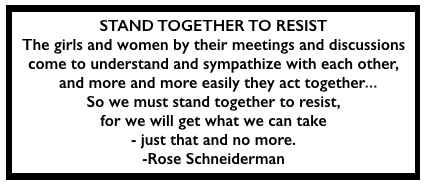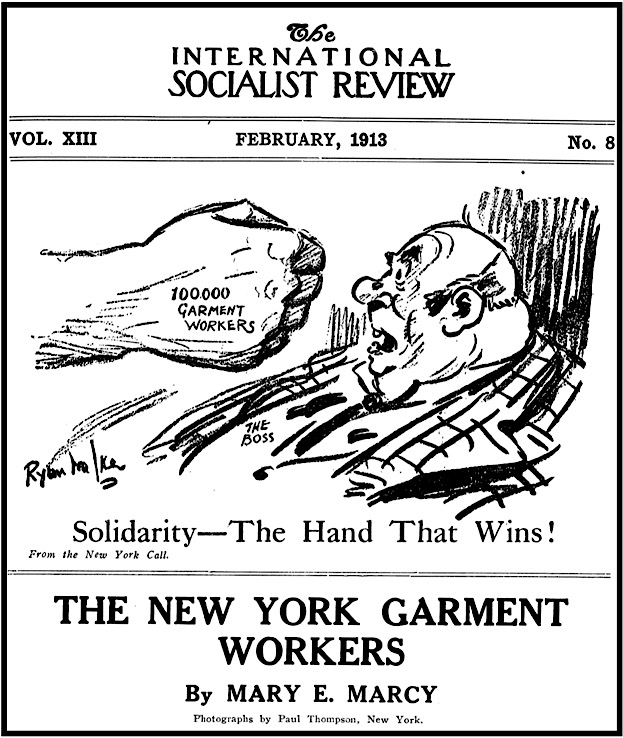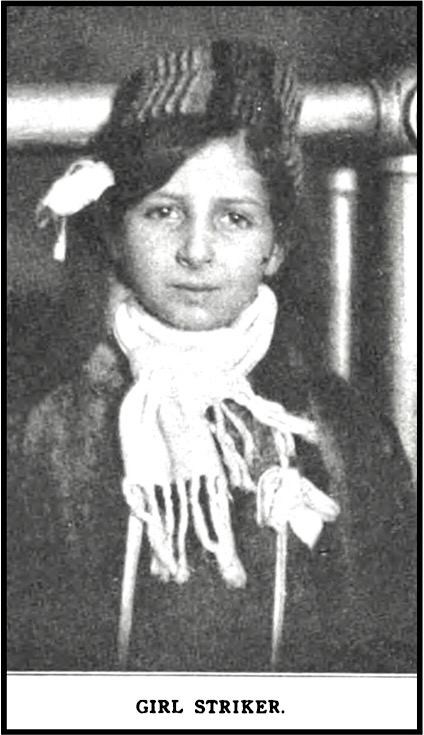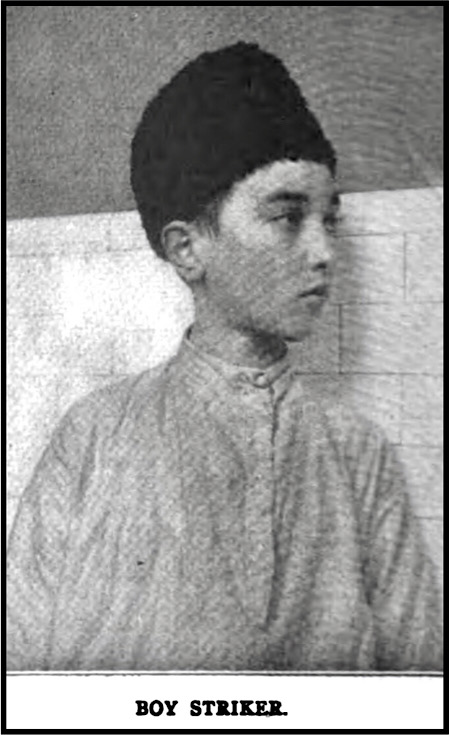 —————
—————
Hellraisers Journal – Monday February 3, 1913
New York, New York – The Garment Strike by Mary Marcy, Photos by Paul Thompson
From the International Socialist Review of February 1913:
[Part I of III]
A WALKOUT which may yet involve every garment worker in the nation, was started in New York City, December 30th, when scores of thousands of men and women employed in the garment industries responded to the call issued by the United Garment Workers of America and deserted the shops and benches where they had toiled for years.
The response to the strike call was so great that the union officials declared the union was a great deal stronger than they had believed. One thousand five hundred volunteer red scouts, who were picked to carry the official strike declaration, were on the job at 4:00 o’clock in the morning ready to start out with bundles of strike orders to be distributed in all sections of the Lower East Side. Before night over 100,000 men, women and children had taken their working paraphernalia home to begin the good fight.
The garment workers are striking for:
The abolition of the subcontracting system.
The abolition of foot power.
That no work be given out to be done in tenement houses.
Overtime to be paid for at the rate of time and one half, double time for holidays.
A forty-eight hour work week.
A general wage increase of 20 per cent for all the workers in the garment industry.The following scale of wages:
Operators-First class, sewing around coats, sewing in sleeves, and pocket makers, $25 per week; second class, lining makers, closers and coat stitchers, $22; third class, sleeve makers and all other machine workers, $16.
Tailors-First class, shapers, underbasters and fitters, $24; second class, edge basters, canvas basters, collar makers, lining basters and bushelers, $21; third class, armhole basters, sleeve makers, and all other tailoring, $17.
Pressers-Bushel pressers, $24; regular pressers, second class, $24; underpressers and edge pressers, $18.
Women and Child Workers-Button sewers and bushel hands, $12; hand buttonhole makers, first class, 3½ cents; second class, sack coats, 2½ cents; feller hands, not less than $10 a week.
From the start the Rochester workers sent pledges of support, offering to go out in sympathy if their employers should undertake to make up any clothing for the strike-bound New York firms.
The garment workers are beginning to realize the futility of carrying on single-handed fights, by having one trade make up the work while another trade is out on strike and they seem determined to do all in their power to tie up an entire trade henceforth in times of strike.
The response to the strike call was practically unanimous among the Italians. There are also a score of thousand Polish, Bohemian, Hungarian and Jewish workers.
The cutters made a fine showing. They were the first to walk out in the large establishments as soon as the strike notice was delivered. For the first time in the history of the garment workers’ organizations the cutters’ response was prompt and almost entire. This end of the trade is most important, as it is impossible for the employers to secure trained cutters to take the places of the strikers.
Almost from the beginning the Socialists came to the front and offered to lend all the strength of the organization to aid the strikers in winning a victory. The New York Call threw open its columns and prepared to publish daily bulletins of the strike. The Socialist party arranged to supply speakers at the strike meetings and to help in the work of organizing the women in the garment industry.
As days passed the ranks of the strikers were continuously augmented by new acquisitions, and in many points, near to New York City, shops are tied up tight.
At the first hint of the strike the bosses attempted to fill the places of those who walked out, with scabs. The strikers quickly appointed their committees and began to picket the strike district. Enter then, as must needs appear in these little social comedies, the paid “guards” and the police to promote disorder in the name of Peace. Then it was that “peaceful picketing” became a thing of the past. Pickets had thenceforth to tread very softly and with circumspection to avoid a broken head, or arm, or arrest and a fine.
The employers extended to their newfound employes (the scabs) the utmost graciousness and courtesy. Automobiles were promised to take them to and from the shops, with brass buttoned cops to see that trouble did not befall them on the journeys.
Such is the solicitude of the boss for the scabs he needs to break a strike!
But the taxicab drivers sent a thrill of pleasure through union and Socialist circles when they refused to take either the scabs, the guards or the policemen home. At one point fifteen taxicabs were ordered. When the taxies arrived the drivers found a crowd of strikers doing picket duty. As soon as they understood there was a strike in the shop and that they had been hired to take scabs home, they informed the bosses that they were union men and would not haul scabs under any circumstances. The employers threatened to have them fired, but the men only laughed and said they would stick to the union anyway.
[Emphasis added.]
~~~~~~~~~~~~~~~~~~~~~~~~~
SOURCES & IMAGES
Rose Schneiderman Quote, Stand Together to Resist Mar 20, NY
Independent p938, Apr 1905
https://babel.hathitrust.org/cgi/pt?id=coo.31924106546991&view=2up&seq=960
International Socialist Review
(Chicago, Illinois)
-Feb 1913, -article begins on page 583
https://www.marxists.org/history/usa/pubs/isr/v13n08-feb-1913-ISR-gog-ocr.pdf
See also:
Tag: New York Garment Workers Strike of 1913
https://weneverforget.org/tag/new-york-garment-workers-strike-of-1913/
Tag: Mary Marcy
https://weneverforget.org/tag/mary-marcy/
Tag: Paul Thompson
https://weneverforget.org/tag/paul-thompson/
Tag: Ryan Walker
https://weneverforget.org/tag/ryan-walker/
~~~~~~~~~~~~~~~~~~~~~~~~~~
Working Girl Blues – Hazel Dickens & Alice Gerrard



